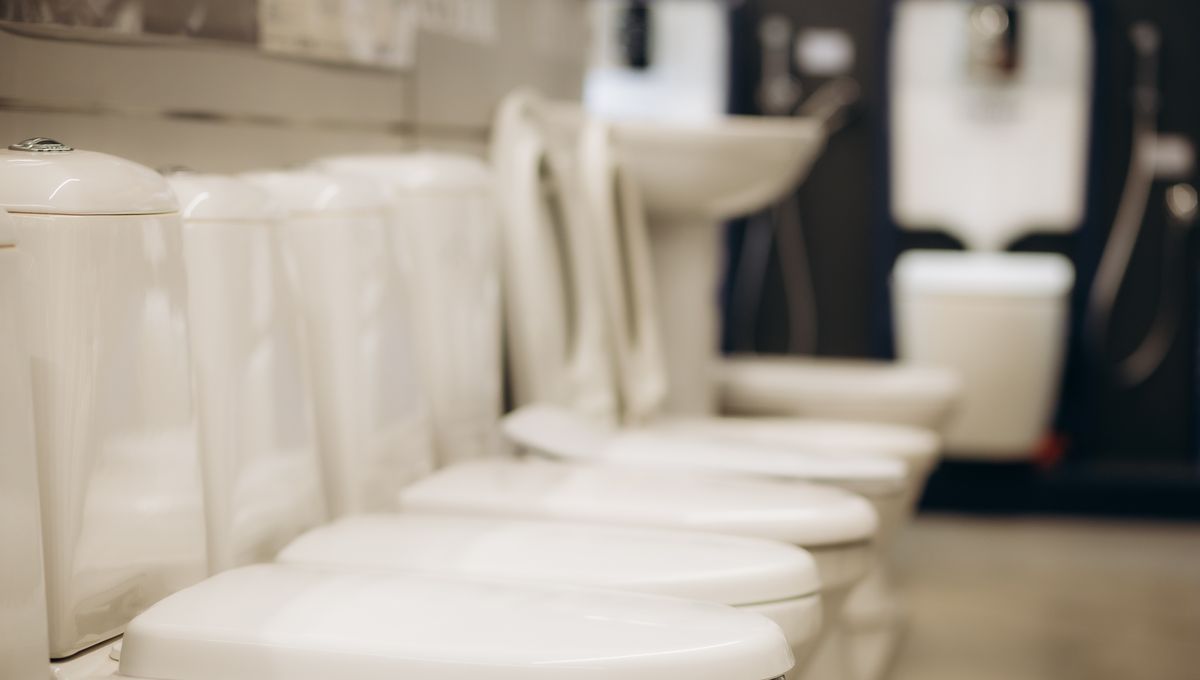
Okay, we know that not all toilets are white – who remembers those avocado and salmon pink bathrooms suites of the UK 1970s? But the vast majority of today’s toilets are white, and this seems to be the case across the world: in private homes, offices, and public bathrooms, apart from those terrifying stainless steel self-washing ones. But why are the majority of toilets white? Is it cleanliness, material-based, or is it simply to help you locate you loo in the middle of the night? We dig deeper.
Why are toilets white?
There seem to be a lot of reasons floating around on the internet as to why toilets are typically white. One suggestion is for better hygiene as dirt and stains show up much more noticeably on a white surface, making the toilets easier to clean.
Given that the bathroom is often one of the smaller rooms in someone’s home, there is also the idea that white toilets make the space feel bigger, since the white gleam on your toilet reflects light. It also doesn’t clash with any other color and fits in with your white bathtub and white sink – but surely there is more to this than just a passion for cohesive home decor?
Most toilets are made of ceramic materials, generally porcelain or vitreous china. The material is typically poured into a mold to create the shape of the toilet and then fired at extremely high temperatures in a kiln, which results in the white color. There may be additional stages to convert the porcelain into vitreous china.
White porcelain is typically high-density because the base material includes quartz, feldspar, silica, and clay. This is the second most commonly used material for toilets behind vitreous china. Vitreous china toilets are made by coating the porcelain with an enamel glaze made from powdered glass. Once glazed, the toilets are fired again, creating the common shiny and glossy toilet finish. Since they are mass-produced, it’s much quicker and cheaper to make white toilets than to start adding in colors.
Both materials are non-porous, which is especially helpful when dealing with waste products. If toilets were made of plastic, eventually the waste in the system would begin to seep into the material – not ideal for something that needs to be kept clean. This is why portable toilets often only have a 10-30 year lifespan.
Honorable mention
There was a solid 18-karat gold toilet in Blenheim Palace in Oxfordshire, UK, estimated to be worth £4.8 million ($6.2 million), which was stolen in September 2018. Though the burglar was eventually caught, maybe sticking to good old porcelain would have been a safer bet?
So, there we go – white toilets are cheaper to make, easier to clean, and have the added bonus of making your bathroom appear just a little bit bigger than it actually is. But if you’re still in possession of a 60s or 70s-style avocado bathroom suite, don’t despair: according to the Guardian, they are back in fashion with the younger generation.
Whatever color your toilet, just make sure the lid is down when you flush (or maybe not?).
All “explainer” articles are confirmed by fact checkers to be correct at time of publishing. Text, images, and links may be edited, removed, or added to at a later date to keep information current.
Source Link: Why Are Toilets White?